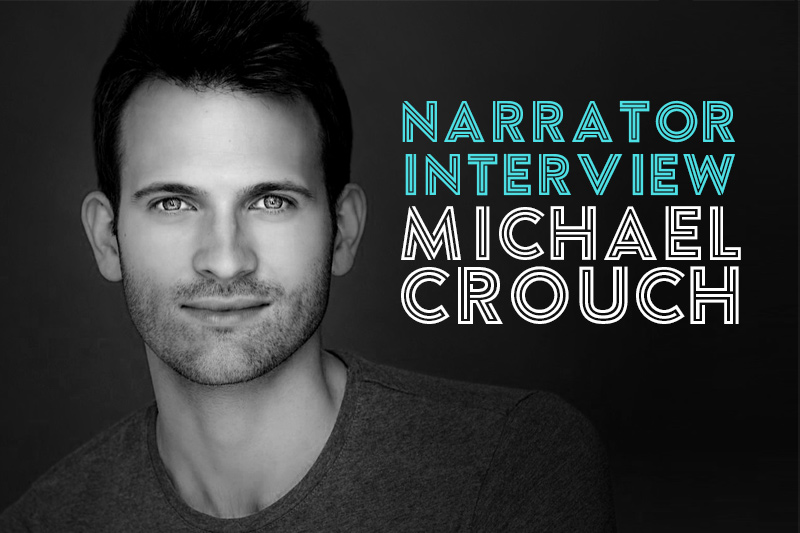
Michael Crouch is the narrator of Lights All Night Long by Lydia Fitzpatrick—a gripping and deftly plotted narrative of family and belonging.
He is also the voice behind audiobooks The Great Believers by Rebecca Makkai, I Know You Know Who I Am by Peter Kispert, The Strange Fascinations of Noah Hypnotik by David Arnold, and The Ship of the Dead by Rick Riordan.
He told us about how he became an audiobook narrator, what his process is, and his own audiobook favorites.
Please tell us a little bit about your path to becoming an audiobook narrator.
I’ve been acting since I was a kid. Lots and lots of theatre. Shortly after graduating college, I realized I didn’t want to pursue a career on the stage…but I still felt an itch to act in some form. That’s when I started exploring the art and business of voiceover. I began taking commercial and animation classes, and after much toil and tenacity, began working in the field. At that point I was still a stranger to audiobook narration.
In late 2013, I enrolled in a narration course taught by Grammy-winning producer and director Paul Ruben. I found the work frustrating…and fascinating. The class met once a week for six weeks, and around the third week my agent sent me an audition for an audiobook for Random House. I consciously applied the technique I’d been learning in Paul’s class, and right when the course ended I found out I got the job! The timing was amazing. That being said, it took another two years of patience and persistence before I started working consistently.
What is your process for preparing to narrate an audiobook?
I start by reading a PDF of the script on my iPad. As I scan the page, I make marks that help my eye follow the flow of the narrative. I don’t plan what words to emphasize or anything like that—these marks just decrease the likelihood of my stumbling over the words when reading aloud (it still happens, though, believe me). I also bookmark characters as they’re introduced, along with unfamiliar words or pronunciations. After finishing the book, I jot down a few thoughts about the story and/or the characters to refer back to later.
Next is what I call Phase 2: I skim through the text and write notes that help me tap into the emotional energy of the scene. I also make different-colored marks next to each character’s lines (red mark for Joe, blue mark for Betty, etc.); this helps me switch back and forth between characters during the session. THEN I flesh out the characters’ personalities and voices. Phew!
Still, I make sure not to over prepare. My goal is to walk into the studio with an outline, then work from my gut. A sensitive moment-to-moment approach breathes color and life into the narration.
What do you think is the key to your success in narrating audiobooks?
I think one reason might be the balance I just mentioned. Balancing preparation and studio spontaneity can be tricky. I have to work on finding the right mix from book to book.
What is your favorite line from an audiobook you’ve narrated?
I like this question. There are lots of gems in Peter Kispert’s short story collection I Know You Know Who I Am. Here’s one:
“The light from a candle catches on each mounted photo, that glass hiding those wild secrets I had put there myself, those little monsters, my reflection in every frame.”
Are you an audiobook listener? If so, what are some of your favorite audiobooks?
Yes. Favorites include Jeremy Irons’ brilliant narration of Lolita, The Silence of the Lambs read by Frank Muller, The Girl with the Dragon Tattoo read by Simon Vance, and I think Clare Corbett’s work in The Girl on the Train is exquisite. Their performances inspire me.
Is there anything else you’d like to share with us?
I appreciate the intimacy of audiobooks. It fascinates me how I can have these quiet moments in the booth, in the dark, connecting with the words on the page—and somehow these moments get recorded and shared with people, one person at at a time, in their earphones. There’s nothing like it.










